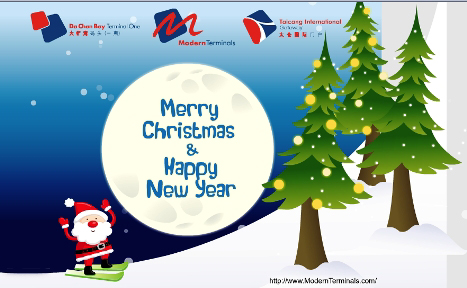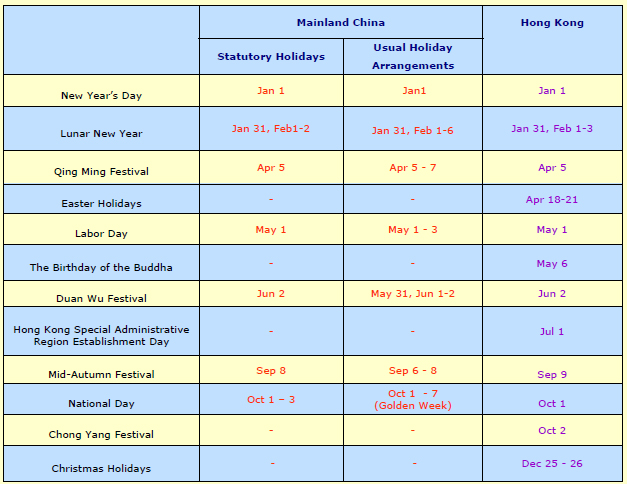China News Insights(只有英文版本)
Festivals and Public Holidays for 2014 in Mainland China and Hong Kong
Christmas and New Year are around the corner. Modern Terminals wishes you a joyous festival holiday and a prosperous Year of 2014.
In addition, please see below paragraphs for more information and interesting stories about Chinese zodiac.
What is Chinese zodiac?
The Chinese zodiac, known as Sheng Xiao in Chinese, is a system based on twelve year cycle which relates each year to an animal sign. The zodiac traditionally begins with the sign of rat, followed by ox, tiger, rabbit, dragon, snake, horse, sheep, monkey, rooster, dog and pig. It was created for counting years in Ancient China, well before the existing Christian calendar became popular.
What is the zodiac of 2014?
It is the year of horse in 2014 starting from January 31, the first day on the lunar calendar in China. According to popular legends, these Sheng Xiao animals were selected by the almighty Jade Emperor for representing different years. It was a swimming race for the animals to get chosen and ranking. (Endnote 1) Horse’s place was taken by a sneaky snake at the destination and finally got the seventh place.
Though horse was not the champion of the race, it has occupied a special seat in China history, for instance, leading soldiers into battles, pulling the ploughs and transporting people between places. It is a symbol of energy in Buddhist religion. (Endnote 2) Images of horses symbolized power in royal tombs in the fourth century B.C. (Endnote 3) Greetings associated with horse and dragon meaning “wishing you boundless energy” is common during Chinese New Year as well.
Endnotes:
1) Source: Chinese Zodiac Story, http://www.topmarks.co.uk/chinesenewyear/zodiacstory.aspx
2) Source: Symbolism of Animals in Buddhism, http://ccbs.ntu.edu.tw/FULLTEXT/JR-BH/bh117490.htm, summer 1988
3) Source: Art review; the Chinese horse, a symbol of power, http://www.nytimes.com/1997/10/24/arts/art-review-the-chinese-horse-a-symbol-of-power.html, October 24, 1997

